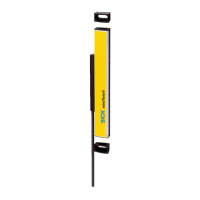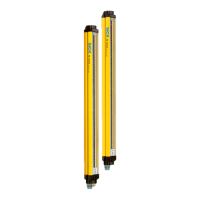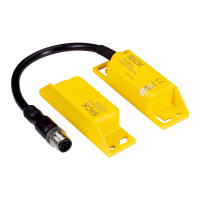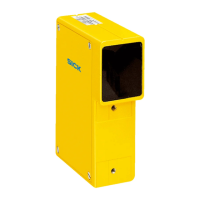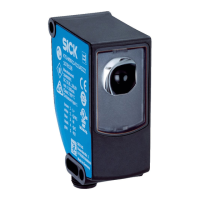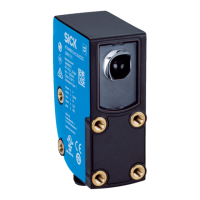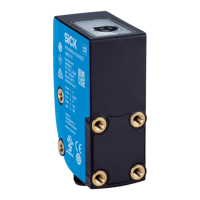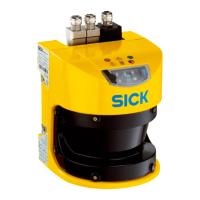NOTE
T
he required minimum distance depends on the safety laser scanner’s set resolution.
Take account of the following notes when choosing the resolution:
•
If you choose a fine resolution, the protective field range is smaller and so the pro‐
tective field is only suitable for smaller hazardous points. But the required mini‐
mum distance is smaller, so you can mount the safety laser scanner closer to the
hazardous point.
•
If you choose a coarser resolution, the protective field range is larger and so the
protective field is also suitable for larger hazardous points. But the required mini‐
mum distance is larger, so you must mount the safety laser scanner further away
from the hazardous point.
Calculating minimum distance
T
he calculation of the minimum distance is based on international or national stan‐
dards and statutory requirements applicable at the place of installation of the machine.
If the minimum distance is calculated according to ISO 13855, then it depends on the
following points:
•
Machine stopping time (time interval between triggering the sensor function and
the end of the machine’s dangerous state, including signal propagation times in
the network and processing time in the control)
•
Response time of the protective device, see "Response times", page 157
•
Reach or approach speed of the person
•
Resolution (detection capability) of the safety laser scanner
•
Type of approach: orthogonal
•
Parameters specified based on the application
NOTE
A
dditional information is available in the ISO 13855 standard and in the Guidelines
Safe Machinery.
NOTE
SIC
K offers a stopping/run-down time measurement service in many countries.
Calculation example of the minimum distance S according to ISO 13855
T
he example shows the calculation of the minimum distance for an orthogonal
approach to the protective field. A different calculation may be required depending on
the application and the ambient conditions (for example, for a protective field parallel to
or at any angle to the direction of approach or an indirect approach).
b
First, calculate S using the following formula:
S = 2000 mm/s × T + 8 × (d – 14 mm)
where:
°
S = minimum dis
tance in millimeters (mm)
°
T=stopping/run-down time for the entire system in seconds (s)
(Response time of the safety laser scanner + machine’s stopping/run-down
t
ime, incl. response time of the machine’s control system and signal propaga‐
tion time)
°
d = r
esolution of the safety laser scanner in millimeters (mm)
The reach/approach speed is already included in the formula.
✓
If the result S is ≤ 100 mm, use S = 100 mm.
✓
If the result 100 mm < S ≤ 500 mm, use the calculated value as the minimum
distance.
PROJECT PLANNING 4
8021913/15ZW/2019-11-14 | SICK O P E R A T I N G I N S T R U C T I O N S | microScan3 – EFI-pro
43
Subject to change without notice
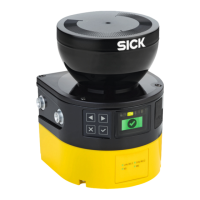
